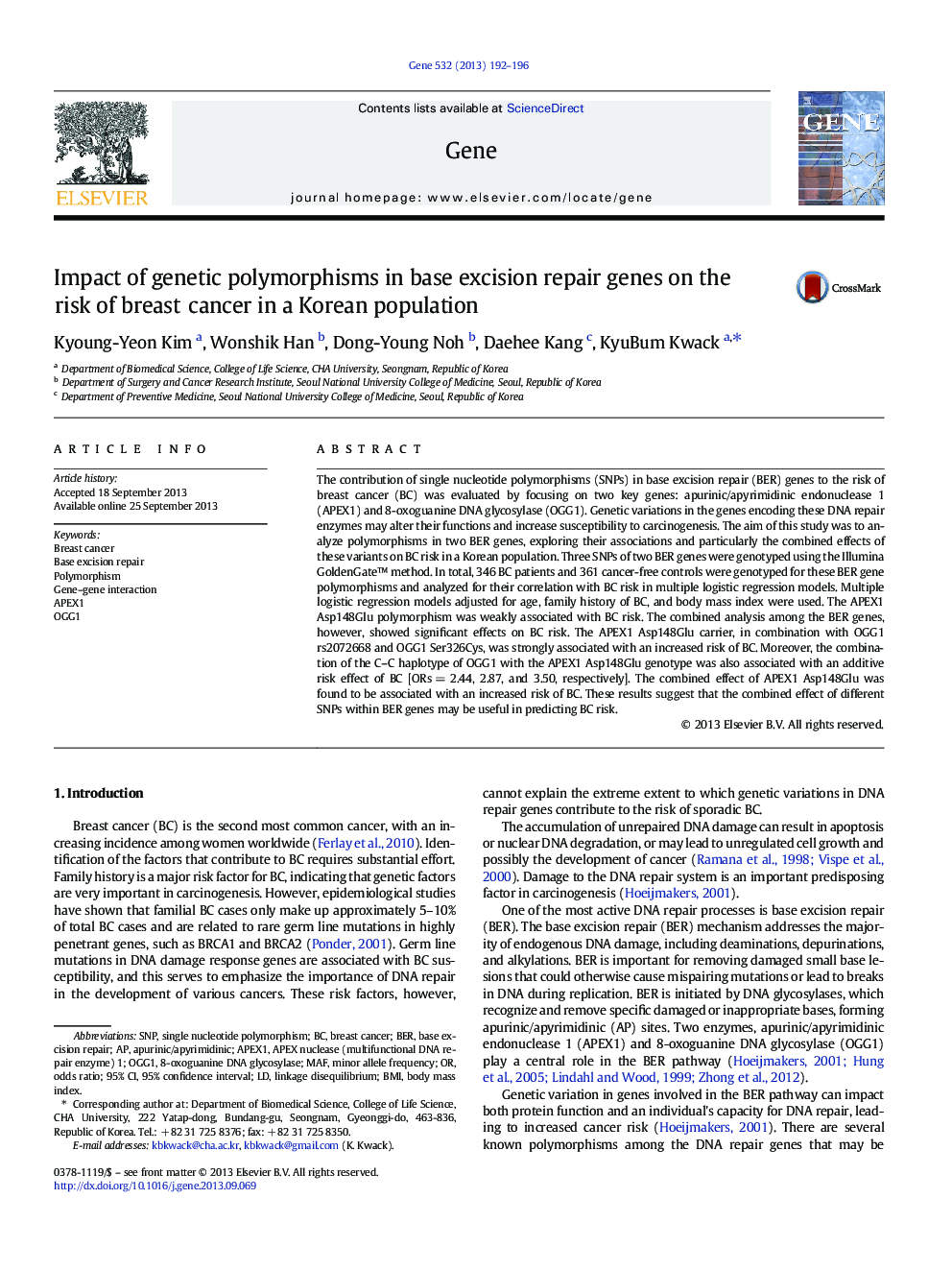| Article ID | Journal | Published Year | Pages | File Type |
|---|---|---|---|---|
| 2816891 | Gene | 2013 | 5 Pages |
The contribution of single nucleotide polymorphisms (SNPs) in base excision repair (BER) genes to the risk of breast cancer (BC) was evaluated by focusing on two key genes: apurinic/apyrimidinic endonuclease 1 (APEX1) and 8-oxoguanine DNA glycosylase (OGG1). Genetic variations in the genes encoding these DNA repair enzymes may alter their functions and increase susceptibility to carcinogenesis. The aim of this study was to analyze polymorphisms in two BER genes, exploring their associations and particularly the combined effects of these variants on BC risk in a Korean population. Three SNPs of two BER genes were genotyped using the Illumina GoldenGate™ method. In total, 346 BC patients and 361 cancer-free controls were genotyped for these BER gene polymorphisms and analyzed for their correlation with BC risk in multiple logistic regression models. Multiple logistic regression models adjusted for age, family history of BC, and body mass index were used. The APEX1 Asp148Glu polymorphism was weakly associated with BC risk. The combined analysis among the BER genes, however, showed significant effects on BC risk. The APEX1 Asp148Glu carrier, in combination with OGG1 rs2072668 and OGG1 Ser326Cys, was strongly associated with an increased risk of BC. Moreover, the combination of the C–C haplotype of OGG1 with the APEX1 Asp148Glu genotype was also associated with an additive risk effect of BC [ORs = 2.44, 2.87, and 3.50, respectively]. The combined effect of APEX1 Asp148Glu was found to be associated with an increased risk of BC. These results suggest that the combined effect of different SNPs within BER genes may be useful in predicting BC risk.
